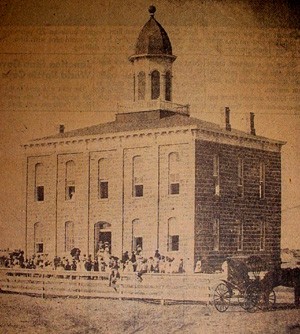Tom Green County Courthouse, San Angelo, Texas. (original) (raw)

The current 1928 Tom Green County courthouse
Photo courtesy Terry Jeanson, March 2017
Tom Green County Courthouse
Date: 1928
Architect: Anton F. Korn
Style: Classical Revival
Material: Brick and stone
As of 2017, plans were underway to remodel the interior of the courthouse which will include the historic restoration of the district courtrooms to their 1928 condition.

The 1928 Tom Green County Courthouse as it appeared in 1939
Photo courtesy TXDoT
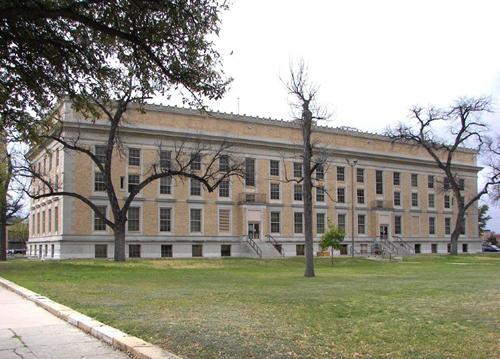
North side of Tom Green County courthouse
Photo courtesy Terry Jeanson, March 2017
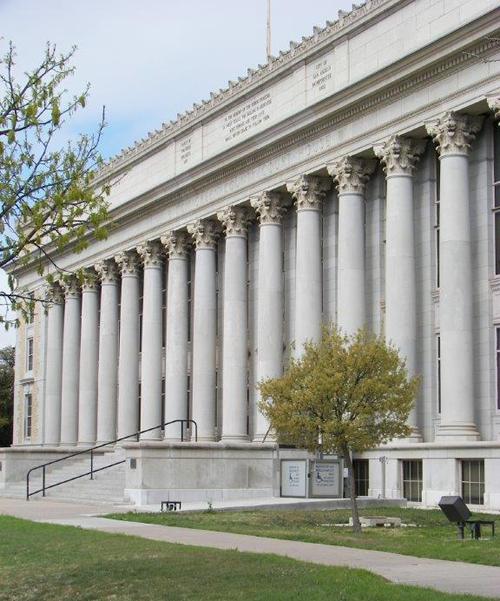
Courthouse entrance colonnade
Photo courtesy Terry Jeanson, March 2017

Fountain in front of the courthouse dedicated to San Angelo's first mayor, George Julien Bird.
Photo courtesy Terry Jeanson, March 2017
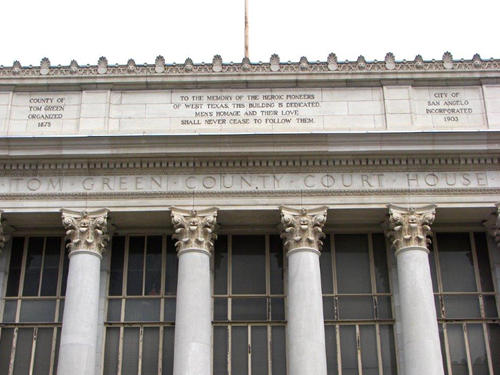
Dedication on the entablature over the front entrance
Photo courtesy Terry Jeanson, March 2017
Photographer's Note:
Along with the date of county organization (1875) and the date San Angelo was incorporated (1903), there is a statement on the front of the parapet roof over the entrance that reads: "To the memory of the heroic pioneers of West Texas, this building is dedicated. Men's homage and their love shall never cease to follow them." - Terry Jeanson
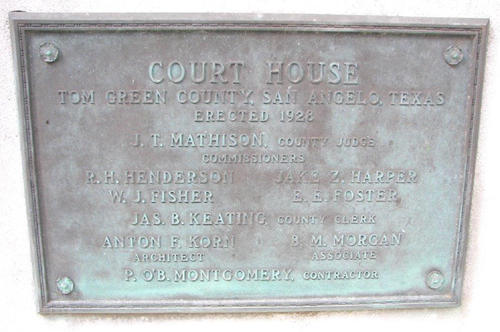
Courthouse dedication plaque on the southeast corner
Photo courtesy Terry Jeanson, March 2017
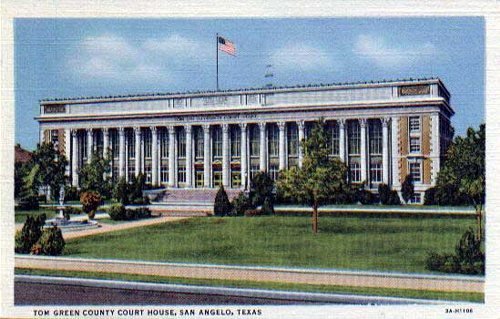
Postcard courtesy www.rootsweb.com/%7Etxpstcrd/
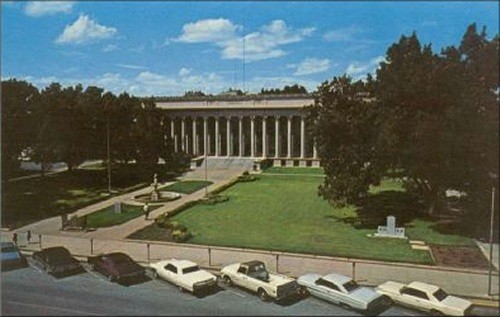
Courthouse and courthouse grounds
Postcard courtesy www.rootsweb.com/%7Etxpstcrd/
Date: 1885
Architect: W. W. Larmour
Style: Second Empire
Material: Stone
After the Ben Ficklin flood, the county seat was moved to San Angelo in 1883 and a third, stone courthouse was built in 1885. It was designed in a Second Empire style by San Antonio architect W. W. Larmour and had Mansard cupolas on the corner pavilions, bracketed pediments, roof ventilators and a central, truncated clock tower. Plans for this courthouse were originally submitted by contractor J.H. Walker. When Larmour learned that Walker was using his plans, he sued the contractor, but by that time, the county had fired Walker and replaced him with John C. Lillis. Larmour sued the new contractor and was awarded $2,005.00.
Larmour's construction superintendent was Oscar Ruffini, who later sent the plans for this courthouse to his brother, Frederick, from which they both derived the designs for their popular Second Empire style courthouses. The 1885 courthouse was demolished in 1927 when the current courthouse was being built. Some of the stone and the bell from the 1885 courthouse was placed into the 1929 Emmanuel Episcopal Church at S. Randolph Street and W. Harris Street, just northwest of the current courthouse.
Sources:
The Texas Historical Commission's County Atlas at atlas.thc.state.tx.us and
The Handbook of Texas Online at tshaonline.org/handbook.

The 1885 Tom Green County courthouse in San Angelo
Postcard courtesy of courthousehistory.com
The second Tom Green County courthouse, completed in February of 1882, was a rectangular, Greek-Revival style, two-story stone building with a hipped roof. The courthouse had five bays across the front and back, separated by pilasters, three bays on the sides and central cylindrical tower.
After surviving the Ben Ficklin flood of August 24, 1882 (some sources say the courthouse was destroyed,) the materials from this courthouse were used to build a school in San Angelo, c.1883, which was a copy of the former courthouse.
Sources:
The Texas Historical Commission's County Atlas at atlas.thc.state.tx.us and
The Handbook of Texas Online at tshaonline.org/handbook.
The 1882 Tom Green County Courthouse in Ben Ficklin. Photo from old newspaper clipping, no date or name of paper
The first Tom Green County courthouse was a 40' x 60' one-story jacale (adobe-like structure) with three rooms. It was donated by sheriff James Spears and Francis Corbett Taylor, a close friend of the town's namesake. The 1876 courthouse was destroyed in the flood of 1882.
Sources:
The Texas Historical Commission's County Atlas at atlas.thc.state.tx.us and
The Handbook of Texas Online at tshaonline.org/handbook.
